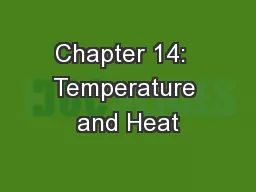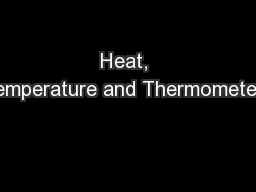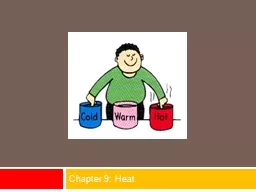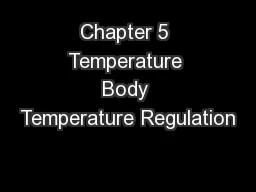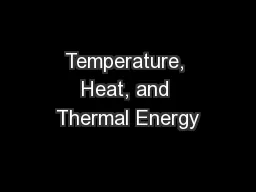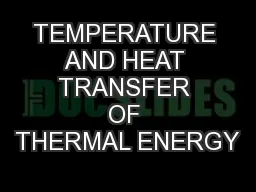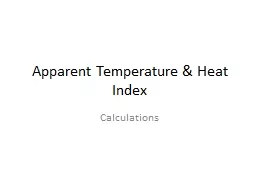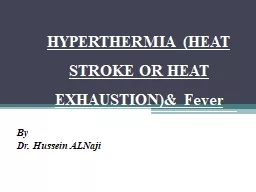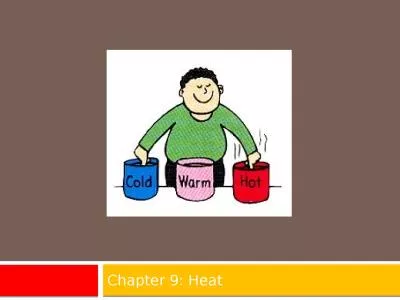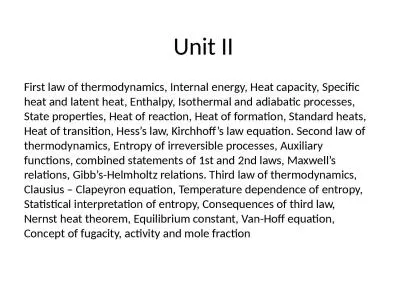PPT-Chapter 14: Temperature and Heat
Author : pasty-toler | Published Date : 2018-03-22
2016 Pearson Education Inc Temperature and heat Goals Temperature Figure 141 Temperature is an attempt to measure the hotness or coldness on a scale
Presentation Embed Code
Download Presentation
Download Presentation The PPT/PDF document "Chapter 14: Temperature and Heat" is the property of its rightful owner. Permission is granted to download and print the materials on this website for personal, non-commercial use only, and to display it on your personal computer provided you do not modify the materials and that you retain all copyright notices contained in the materials. By downloading content from our website, you accept the terms of this agreement.
Chapter 14: Temperature and Heat: Transcript
Download Rules Of Document
"Chapter 14: Temperature and Heat"The content belongs to its owner. You may download and print it for personal use, without modification, and keep all copyright notices. By downloading, you agree to these terms.
Related Documents

